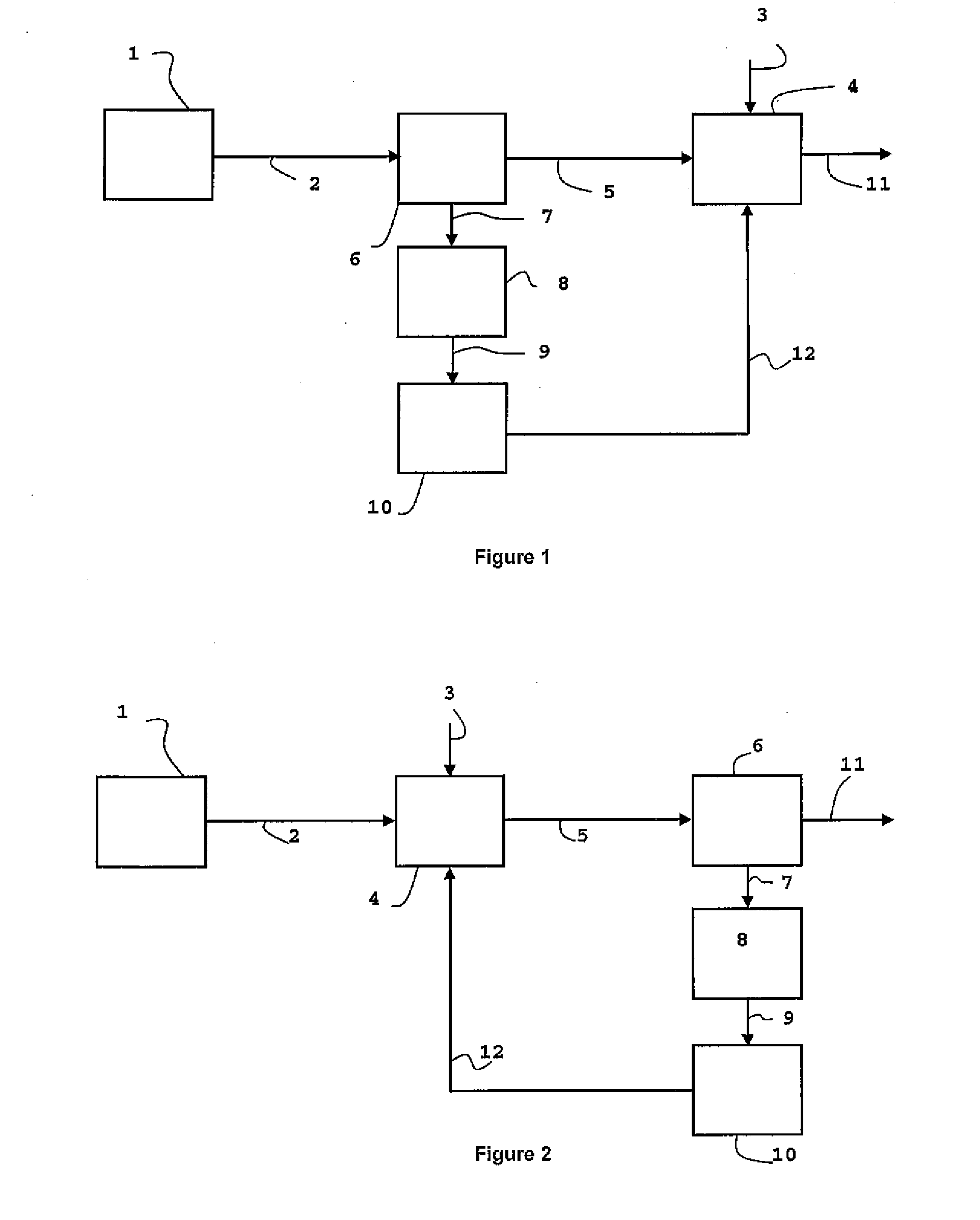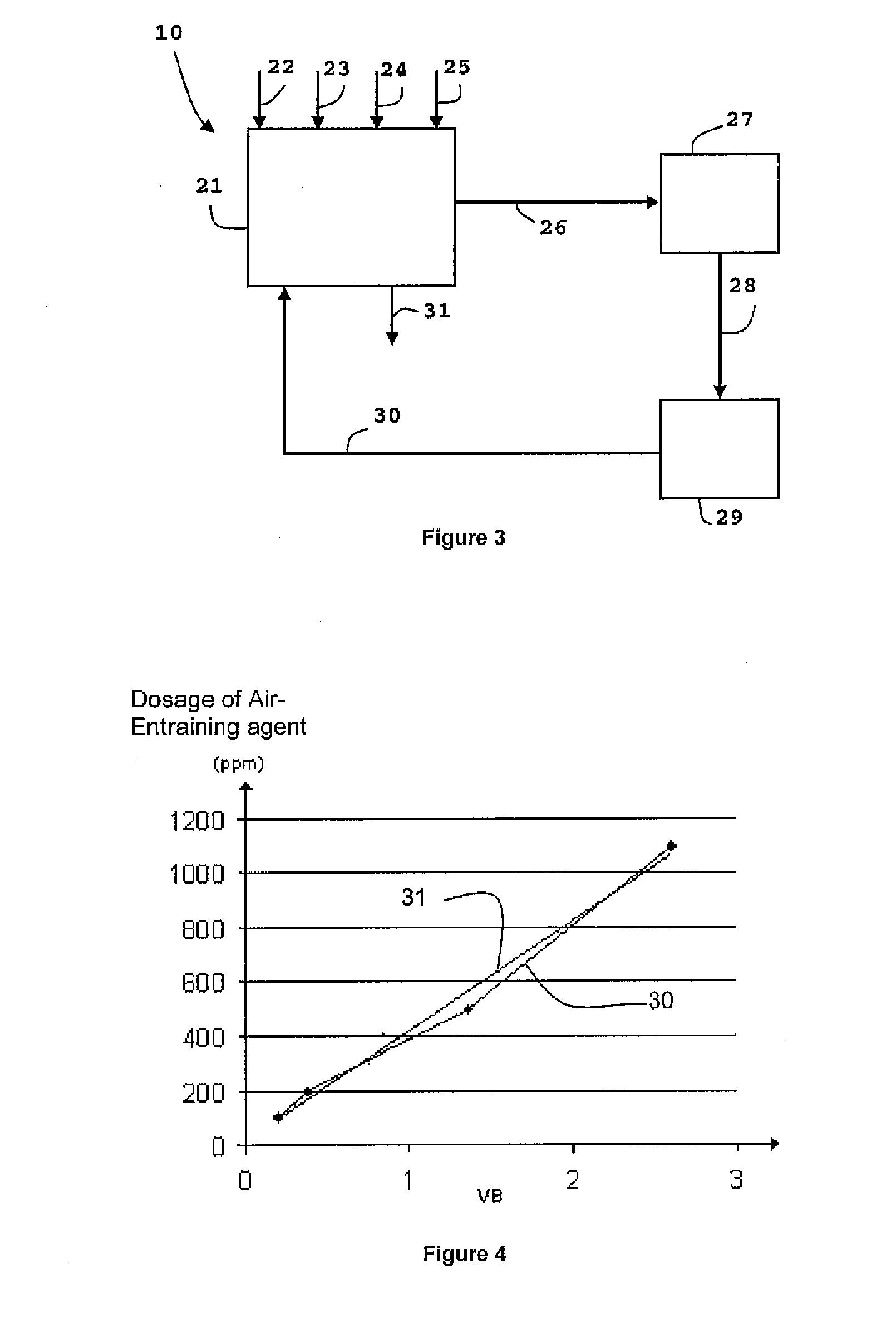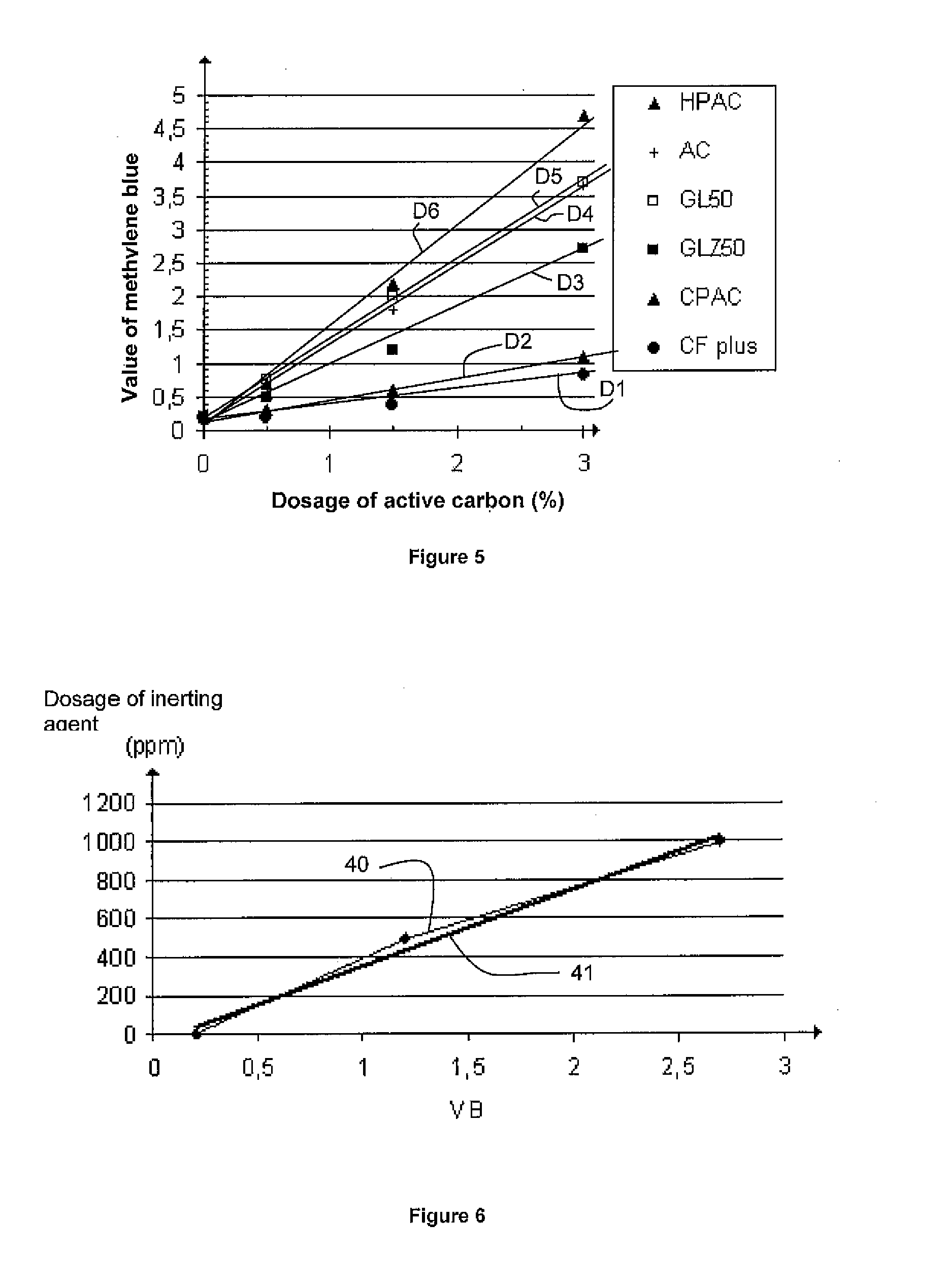Process for production of a hydraulic composition with entrained air
a technology of hydraulic composition and entrained air, which is applied in the direction of sustainable waste treatment, solid waste management, application, etc., can solve the problems of reducing the efficiency of the air-entraining agent of the hydraulic composition, and being unable to predict the evolution of the efficiency of the air-entraining agen
- Summary
- Abstract
- Description
- Claims
- Application Information
AI Technical Summary
Benefits of technology
Problems solved by technology
Method used
Image
Examples
example 1
Establishment of the First Measurement Method of the Quantity of Air-Entraining Agent to be Added to a Hydraulic Composition to be Tested
[0215]The first example of the previously described process for production of a hydraulic composition according to the invention was carried out. Fly ash not containing active carbon, to which active carbon was added, was used to simulate fly ash polluted by active carbon. This makes it possible to easily modify the quantity of active carbon associated with the fly ash
[0216]The reference fly ash is Will County fly ash not intrinsically containing active carbon. The reference active carbon is GLZ50. The reference hydraulic composition corresponds to the mortar according to formulation (1) in which the fly ash is Will County fly ash. The hydraulic binder corresponds to the ensemble comprising the Portland cement and the fly ash. The optimum concentration of air-entraining agent is considered to be the concentration which results in a 10% air content,...
example 2
Determination of the Quantity of Inerting Agent from the Methylene Blue Value for a Mortar with Fly Ash
[0225]The third example of the previously described process for production of a hydraulic composition according to the invention was carried out. In the present example, the inerting agent used is commercialised under the brand name of Pluronic™ RPE 1720 by BASF. The Pluronic™ RPE 1720 inerting agent is a three-block polymer of the PO / EO / PO type (poly propylene oxide / poly ethylene oxide / poly propylene oxide) comprising a 20% content of ethylene oxide and 2150 g / mol molecular weight. The reference fly ash is Will County fly ash. The reference active carbon is GLZ50. The reference hydraulic composition corresponds to the mortar according to formulation (1) and comprises 100 ppm of air-entraining agent. The optimum concentration of inerting agent is considered to be the concentration that results in a 10% air content. Tests were carried out by modifying the quantity of active carbon a...
example 3
Determination of the Quantity of Inerting Agent for a Mortar without Fly Ash
[0234]A mortar according to formulation (2) was produced without active carbon and with 50 ppm of AEA. The initial and final air contents were measured.
[0235]A mortar according to formulation (2) was produced without active carbon and without AEA. The initial and final air contents were measured.
[0236]A mortar according to formulation (2) was produced with 50 ppm of AEA and with 0.5% of GLZ50 active carbon. The initial and final air contents were measured.
[0237]A mortar according to formulation (2) was produced with 50 ppm of AEA, with 0.5% of GLZ50 active carbon and 500 ppm of the Pluronic™ RPE 1720 inerting agent. The initial and final air contents were measured.
[0238]The results are grouped together in Table 10 below.
TABLE 10Mortar without fly ashInitial airFinal aircontent (%)content (%)Mortar without active carbon, with1314.2AEA, without inerting agentMortar without active carbon, without5.25.6AEA, with...
PUM
| Property | Measurement | Unit |
|---|---|---|
| Time | aaaaa | aaaaa |
| Volume | aaaaa | aaaaa |
| Volume | aaaaa | aaaaa |
Abstract
Description
Claims
Application Information
 Login to View More
Login to View More - R&D
- Intellectual Property
- Life Sciences
- Materials
- Tech Scout
- Unparalleled Data Quality
- Higher Quality Content
- 60% Fewer Hallucinations
Browse by: Latest US Patents, China's latest patents, Technical Efficacy Thesaurus, Application Domain, Technology Topic, Popular Technical Reports.
© 2025 PatSnap. All rights reserved.Legal|Privacy policy|Modern Slavery Act Transparency Statement|Sitemap|About US| Contact US: help@patsnap.com



